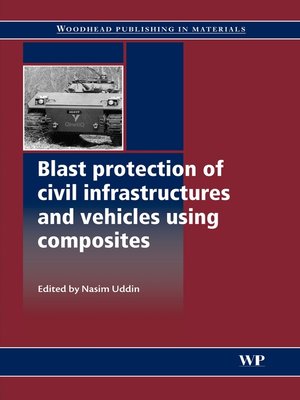Blast Protection of Civil Infrastructures and Vehicles Using Composites
ebook ∣ Woodhead Publishing Series in Civil and Structural Engineering
By Nasim Uddin

Sign up to save your library
With an OverDrive account, you can save your favorite libraries for at-a-glance information about availability. Find out more about OverDrive accounts.
Find this title in Libby, the library reading app by OverDrive.



Search for a digital library with this title
Title found at these libraries:
| Library Name | Distance |
|---|---|
| Loading... |
With the upsurge in terrorism in recent years and the possibility of accidental blast threats, there is growing interest in manufacturing blast 'hardened' structures and retrofitting blast mitigation materials to existing structures. Composites provide the ideal material for blast protection as they can be engineered to give different levels of protection by varying the reinforcements and matrices.Part one discusses general technical issues with chapters on topics such as blast threats and types of blast damage, processing polymer matrix composites for blast protection, standards and specifications for composite blast protection materials, high energy absorbing composite materials for blast resistant design, modelling the blast response of hybrid laminated composite plates and the response of composite panels to blast wave pressure loadings. Part two reviews applications including ceramic matrix composites for ballistic protection of vehicles and personnel, using composites to protect military vehicles from mine blasts, blast protection of buildings using FRP matrix composites, using composites in blast resistant walls for offshore, naval and defence related structures, using composites to improve the blast resistance of columns in buildings, retrofitting using fibre reinforced polymer composites for blast protection of buildings and retrofitting to improve the blast response of concrete masonry walls.With its distinguished editor and team of expert contributors, Blast protection of civil infrastructures and vehicles using composites is a standard reference for all those concerned with protecting structures from the effects of blasts in both the civil and military sectors.
- Reviews the role of composites in blast protection with an examination of technical issues, applications of composites and ceramic matrix composites
- Presents numerical examples of simplified blast load computation and an overview of the basics of high explosives includes important properties and physical forms
- Varying applications of composites for protection are explored including military and non-military vehicles and increased resistance in building columns and masonry walls







